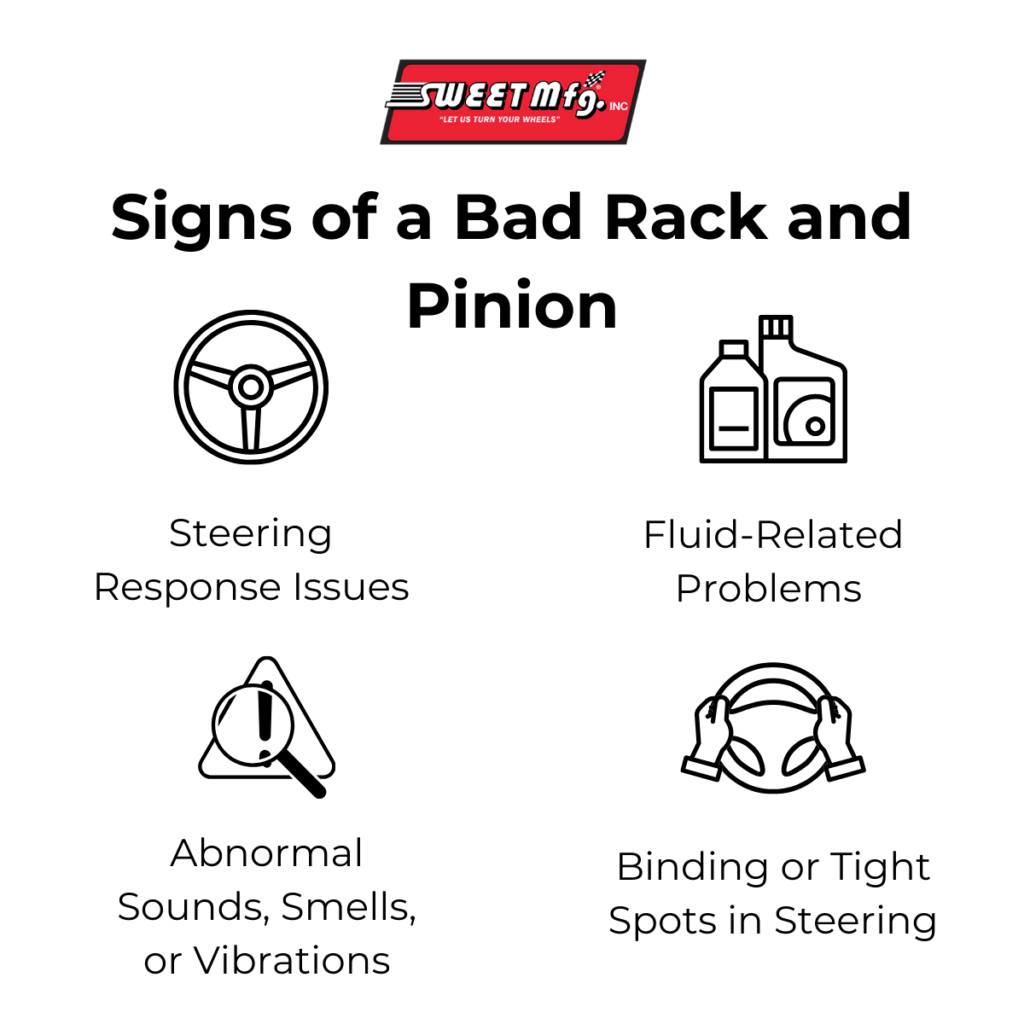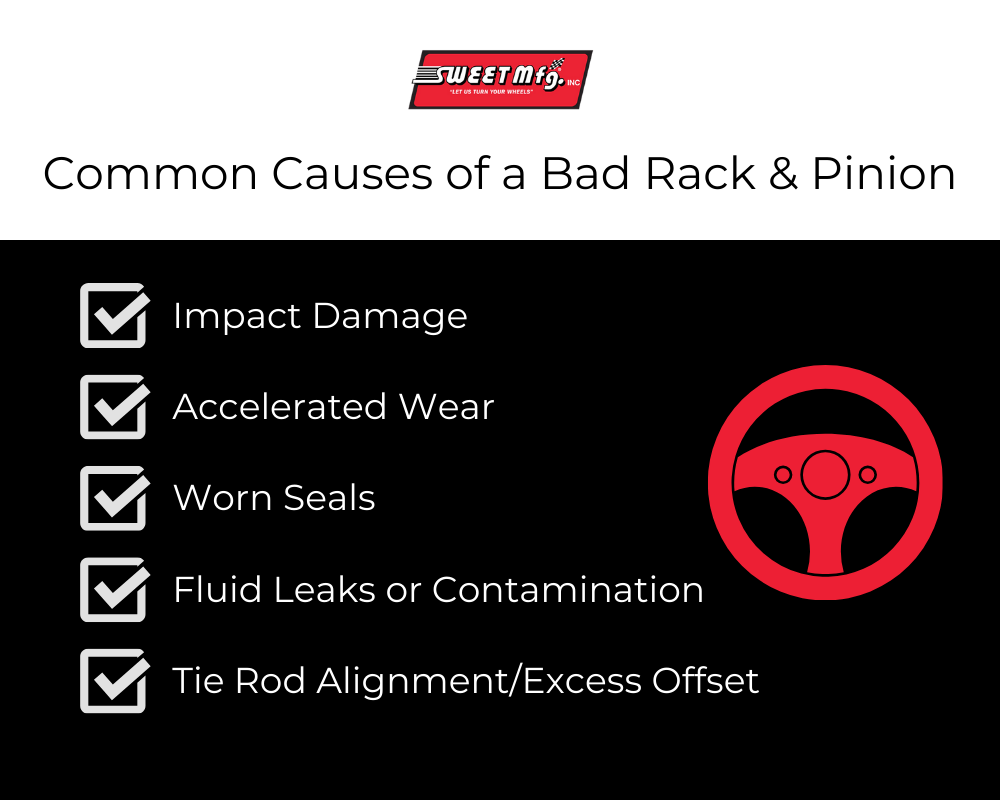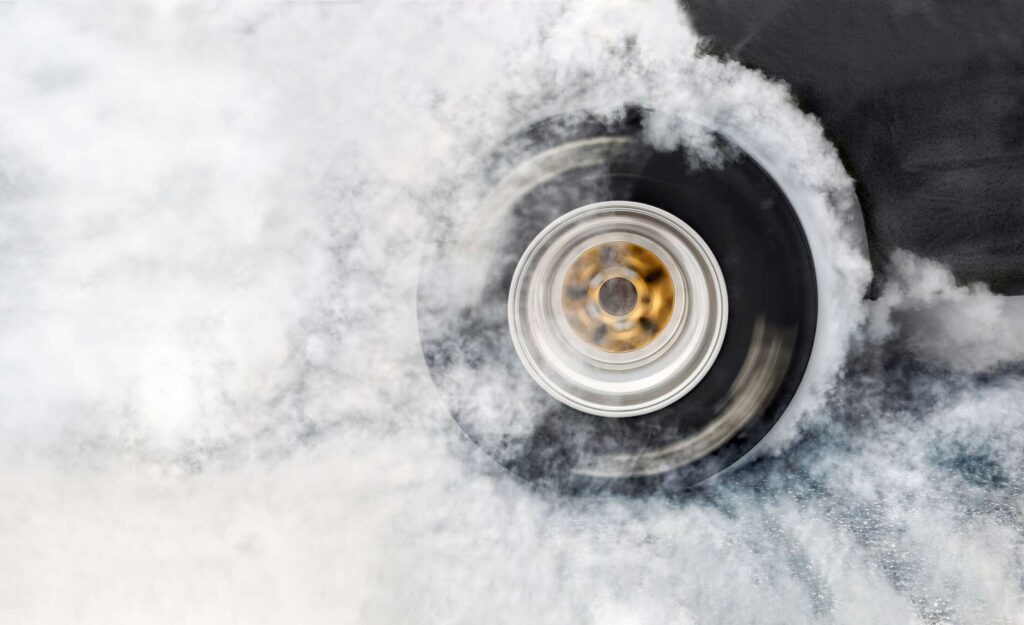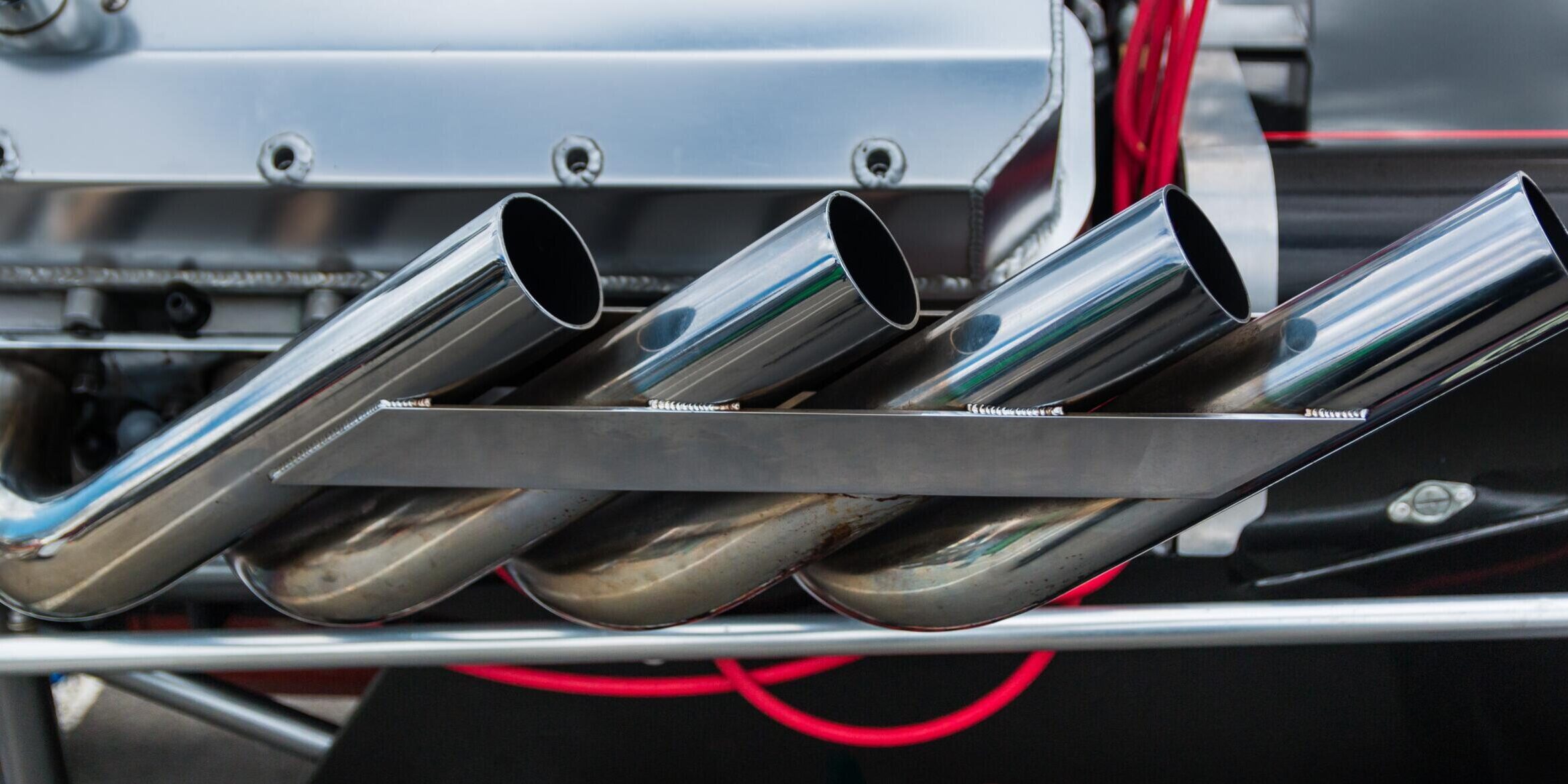Table of Contents
When pushing your race car to its limits, your steering system must perform flawlessly. Understanding the warning signs of rack and pinion issues can mean the difference between a podium finish and a DNF. From subtle steering wheel feedback changes to obvious handling inconsistencies during high-speed cornering, these warning signs shouldn’t be ignored.
Understanding Race Car Rack and Pinion Systems
A race car’s rack and pinion steering system represents the critical connection between driver input and precise directional control. Unlike conventional steering systems, racing applications utilize aerospace-grade materials and precision-engineered components calibrated for high-performance environments. The core assembly consists of a hardened steel rack shaft with precision-cut teeth meshing with a hardened pinion gear, housed within a lightweight aluminum casing designed to withstand extreme G-forces.
Racing rack and pinion systems feature significantly quicker steering ratios (typically 2 ½” to 4 ½”), while most street cars would have something closer to a 2”. This aggressive gearing delivers the instantaneous response required for competitive racing. The entire rack and pinion assembly is engineered with minimal internal clearance and specialized seals capable of maintaining integrity under high-temperature, high-stress conditions.

Critical Bad Rack and Pinion Symptoms
Steering Response Issues
Unlike street applications where gradual degradation might be acceptable, racing applications demand peak performance throughout an entire event. Even minimal play in the system can create inconsistent steering response, affecting the driver’s ability to place the car precisely on their intended line through corners. This inconsistency not only impacts lap times but can lead to catastrophic failures under race conditions, where components are already operating at their design limits.
When your race car’s rack and pinion starts failing, steering response problems are often the first warning sign:
- Dead spots during directional changes
- Inconsistent turn resistance throughout the motion range
- Hard steering at low speeds
- Vehicle pull under heavy cornering loads (not to be confused with normal track camber effects)
- Binding or tights spots in the steering
- Looseness or waning to wonder on straightaways
Abnormal Sounds or Vibrations
Racing-specific rack and pinion systems should operate smoothly even under extreme conditions. One of the following might indicate an issue:
- Harsh or irregular vibrations transmitted through the steering column
- Knocking sounds at full steering lock (potentially signaling severe internal component wear)
Fluid-Related Problems
Racing power steering fluid undergoes extreme stress and temperature cycles:
- Darkened fluid or metal particles in fluid can indicate accelerating internal wear
- Fluid leaks around rack boots, pressure line fittings, and mounting points require immediate attention
- Gritty fluid consistency signals significant internal problems
- Burning oil smell, which can resemble burnt marshmallows

Common Causes of a Bad Rack and Pinion
Several factors can lead to a bad race car steering rack, including:
- Impact damage from track debris or vehicle contact can immediately compromise precise steering geometry.
- Accelerated wear from aggressive cornering, rapid directional changes, and extreme forces experienced during racing.
- Worn seals due to sustained high-performance driving, elevated temperatures, and repeated stress cycles.
- Maintenance oversights include neglected fluid maintenance, torque checks, and alignment verification.
- System overload beyond design specifications through excessive suspension modifications or extreme driving conditions.
- Fluid contamination acts like liquid sandpaper, accelerating internal wear.
- Tie Rod Alignment/Excess Offset: Excessive offset of the inner tie rod pivot to manage bump steer can cause excess wear on the rack and pinion.
- Damaged steering rack bushings
Maintenance and Prevention Strategies
Professional race teams understand that steering system reliability directly impacts both race performance and driver safety. Maintenance schedules for racing rack and pinion systems differ significantly from standard auto parts and applications.
Pre-Race Inspection
Before each race event, perform a thorough visual assessment of the components of your steering gear:
- Examine the rack housing for signs of stress or fatigue
- Inspect mounting points and tie rod connections
- Check all seals and boots for deterioration or damage
Between-Race Servicing
It’s recommended that a rack and pinion be serviced regularly (depending on race schedule) every 500-1000 laps or once a race season.
Thorough servicing between races should include:
- Complete disassembly of the rack assembly
- Evaluation of internal wear patterns
- Replacement of components showing any signs of stress
Performance Optimization
- Fluid selection: Use specialized synthetic fluids capable of maintaining viscosity under extreme conditions
- Temperature management: Monitor fluid levels and temperatures, particularly during endurance events
- Alignment specifications: Implement race-specific toe, camber, and caster settings tailored to track configurations and racing conditions

Trackside Inspection Methods
Conducting regular trackside inspections of your race car’s power steering rack and pinion system is crucial for maintaining optimal performance and safety during competition. These comprehensive inspection procedures can help identify potential issues before they compromise your race performance.
Visual Inspection Points
- Examine the rack housing for impact damage or stress fractures
- Inspect mounting brackets and bushings for proper security
- Evaluate tie rod ends and connection points for play or wear
Physical Testing Procedures
- Steering resistance check: With the car’s front end elevated, rotate the steering wheel through its entire range of motion
- Lock-to-lock testing: Listen for unusual clicking or excessive pump noise
Performance Testing
- High-speed steering response: Evaluate immediacy of steering response during practice sessions
- Corner entry behavior: Monitor consistency of steering resistance and predictability of response
- Feedback consistency: Ensure steering maintains the same level of feedback throughout an entire session
When to Replace a Rack and Pinion
Racing at peak performance demands flawless steering precision, making your rack and pinion system one of the most critical components in your race car. Understanding when to replace this vital steering assembly with a new rack can mean the difference between podium finishes and devastating DNFs.
Key indicators that your rack and pinion requires immediate attention include:
- Inconsistent steering response during high-speed cornering
- Feedback variations through different banking angles
- Play in the steering wheel beyond factory specifications
Maintain detailed logs of steering feel, lap times, and anomalies during different race conditions to help identify degradation patterns before they impact performance.
Replacement rack schedules vary by racing discipline:
- Asphalt Racing : Evaluate rack and pinion systems every season or after any contact to the wheels
- Dirt racing: Evaluate rack 2 times per season (when racing every weekend), after contact to the wheels, or a rough track.
Professional mechanics should inspect your steering system whenever you experience:
- Steering response variations at different track temperatures
- Fluid seepage around rack seals
- Audible feedback during aggressive weight transfer
- Changes in steering effort between qualifying and race conditions
Set Yourself Up for Success
Your race car’s steering system is the critical link between your split-second decisions and precise handling on the track. A compromised rack and pinion can mean the difference between victory and defeat. When pushing your machine to its limits, you need competition-grade rack and pinion systems engineered specifically for racing demands, delivering razor-sharp response and reliability that winning drivers depend on.
Don’t wait until steering issues compromise your race day performance. Upgrade to Sweet Manufacturing’s purpose-built racing rack and pinion systems, backed by decades of motorsports expertise. Browse our complete line of race-proven steering solutions, including our renowned power steering pumps and steering boxes designed exclusively for competition vehicles. Contact our technical team today to find the perfect steering setup for your racing application. When victory is measured in fractions of a second, trust Sweet Manufacturing to keep you firmly in control.


